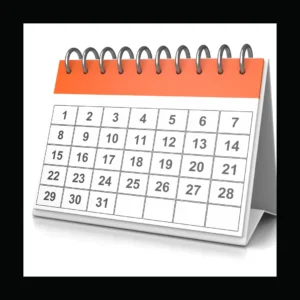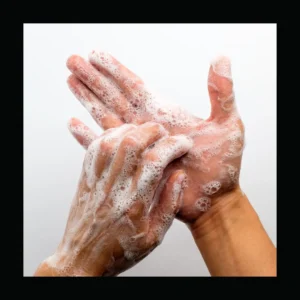What Determines How Long Hearing Aids Last? Factors to Consider
Investing in hearing aids is a crucial step toward improving your hearing and overall quality of life. These devices can even help prevent cognitive decline. However, it’s natural to wonder how long can hearing aids last and what factors affect their longevity. Let’s explore these questions in detail.
Find out more about the parts of a hearing aid.
Average Lifespan of Hearing Aids
On average, hearing aids last 3 to 7 years. However, this range can vary depending on several factors, such as usage, maintenance, technological advancements, and environmental conditions. Understanding these factors can help you maximize the lifespan of your hearing aids.

Key Factors Influencing Hearing Aid Longevity
Daily Usage and Wear
The frequency and manner of use significantly impact the lifespan of hearing aids. Daily use exposes the devices to earwax, moisture, and environmental elements, leading to gradual wear and tear. Conversely, occasional use may extend their lifespan, but daily use is often necessary for optimal hearing.
Proper Care and Maintenance
Consistent care and maintenance are vital for extending the life of your hearing aids. Daily cleaning, proper handling, and safe storage are crucial in maintaining their functionality.
- Daily Cleaning: Clean your hearing aids every day with a soft, dry cloth. This helps remove earwax and other debris. A small brush designed for hearing aids can also help clean delicate components.
- Professional Cleaning: Schedule professional cleanings every three to four months. Professionals can clean parts that are difficult to reach at home, ensuring your hearing aids remain in good condition.
Technological Advancements
Hearing aid technology evolves rapidly, with new models offering improved features and performance. While your current devices might work well, newer models may offer better sound quality, noise reduction, and connectivity features, making them more appealing.
- Software Updates: Keep your hearing aids updated with the latest software. Manufacturers release updates to improve performance and add new features.
- Compatibility: Newer hearing aids might be compatible with modern devices like smartphones and tablets, enhancing usability and convenience.
Environmental Exposure
The environment plays a significant role in the longevity of hearing aids. Devices exposed to high humidity, dust, or extreme temperatures are more likely to experience performance issues. Moisture and debris can infiltrate the devices, leading to malfunctioning components.
- Protective Measures: Use protective sleeves if you frequently find yourself in damp or dusty environments. These can shield the devices from harmful elements.
- Dehumidifiers: Utilize a dehumidifier specifically designed for hearing aids to remove moisture that accumulates during daily use.
Material Quality
Manufacturers use durable materials such as plastic, metal, silicon, and polymers to make hearing devices. While these materials can withstand daily wear, they can degrade over time, especially when exposed to harsh conditions.
- Construction: Behind-the-ear (BTE) hearing aids generally last longer than in-the-ear (ITE) models due to less exposure to earwax and moisture.
- Wear and Tear: Regular inspections can help identify and address potential issues before they become significant problems.
Do Hearing Aids Deteriorate Over Time?
Yes, they can lose their effectiveness over time due to device wear and progressive hearing loss. Understanding these factors can help you determine whether it’s time for a repair or an upgrade.
Device Wear and Tear
Like any electronic device, hearing aids can experience wear and tear. Tiny microphones, speakers, and internal circuitry may malfunction or become less sensitive. Batteries might not hold a charge as effectively, requiring frequent replacements. Exposure to moisture, dust, and extreme temperatures can exacerbate these issues.
- Physical Wear: Components like microphones and speakers may become less sensitive, causing distorted or unclear sound.
- Battery Issues: Rechargeable batteries lose their ability to hold a charge over time, and disposable batteries may need more frequent replacement.
- Environmental Damage: Prolonged exposure to moisture and dust can damage internal components, reducing the hearing device’s effectiveness.
Progressive Hearing Loss
Hearing loss can worsen over time. Even if your hearing devices function perfectly, your hearing needs might change, making them seem less effective. Regular hearing assessments can help monitor changes and adjust your hearing aids accordingly.
- Amplification Needs: As hearing loss progresses, the level of amplification provided by your hearing aids might no longer suffice.
- Frequent Checkups: Regular hearing assessments can help monitor changes and adjust your hearing aids as needed.
Learn more about the causes of muffled hearing.
Signs Your Devices Need Attention
Recognizing the signs that your hearing aids might be losing effectiveness is crucial. Here are some common indicators:
- Distorted Sound: Scratchy, metallic, or unclear sounds indicate problems with the microphone, receiver, or internal circuitry.
- Reduced Volume: If the volume seems lower even with new batteries, it could signal weak batteries, malfunctioning amplifiers, or clogged components.
- Battery Drain: Rapid battery drain suggests internal issues affecting power consumption.
- Inconsistent Performance: Fluctuating performance throughout the day could be due to loose connections or failing components.
If you notice these signs, it might be time to schedule a checkup or an upgrade. Your hearing professional can assess the issue and recommend the best solution.
Maximizing the Lifespan of Your Hearing Devices
Proper care and maintenance can significantly extend the lifespan of your devices. Here are detailed instructions on cleaning, storage, and handling practices:
Cleaning Practices
- Daily Routine: Clean your hearing aids daily with a soft, dry cloth to remove any debris and maintain good working condition.
- Tools: Use a hearing aid cleaning brush designed for delicate components. Avoid harsh chemicals, alcohol, or abrasive cloths.
- Wax Removal: Consult your hearing professional about specialized wax removal tools if earwax buildup is a persistent issue.
Storage Solutions
- Dry and Cool Environment: Store your hearing aids in their protective case with the battery compartment open to allow moisture to escape.
- Avoid Extremes: Keep them away from extreme temperatures and humidity.
- Desiccants: Consider using a dehumidifier designed for hearing devices to absorb moisture and prevent damage from built-up condensation.

Handling Tips
- Clean Hands: Before handling them, thoroughly wash and dry your hands to prevent dirt and oils from transferring to the devices.
- Proper Grip: To reduce the risk of damaging sensitive components, handle your devices by the body, not the microphone or receiver.
- Gentle Handling: Avoid dropping or bending your hearing devices, and treat them with care.
Professional Maintenance
- Regular Checkups: Schedule regular checkups with your hearing professional, typically every six months to a year. These checkups allow for professional cleaning, adjustments, and performance evaluations.
- Prompt Attention: Address any decline in performance promptly with your hearing professional. Early intervention can prevent minor issues from becoming major repairs.
When to Consider Replacing Your Hearing Aids
If your hearing devices show signs of wear or your hearing loss has progressed, it might be time for an upgrade. Newer models offer better performance, advanced features, and improved sound quality, ensuring you continue to enjoy optimal hearing.
Proper care and regular checkups can significantly extend the lifespan of your devices. For personalized advice and professional support, contact Stanford Hearing today. Our experts are ready to help you with all your hearing needs, ensuring you get the most out of your aids for many years to come.
